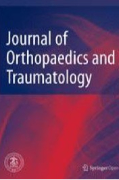
Carpal tunnel release: pain lower with silicone ring tourniquet vs pneumatic tourniquet .
This report has been verified
by one or more authors of the
original publication.
Silicone ring tourniquet versus pneumatic cuff tourniquet in carpal tunnel release: a randomized comparative study
J Orthop Traumatol. 2013 Jun;14(2):131-5. doi: 10.1007/s10195-012-0223-x. Epub 2013 Jan 3050 patients undergoing carpal tunnel release were randomized to receive either a silicone ring tourniquet or pneumatic tourniquet during surgery, to compare the pain levels between patients of each group. After 30 days, no tourniquet-related complications or any wound infections were reported by any of the patients. Patients in the silicone ring tourniquet group experienced significantly less pain immediately prior to having the device removed in comparison to patients who received a pneumatic tourniquet. Overall, patients who received the pneumatic tourniquet had a significantly larger increase in pain from time of tourniquet application to just prior to tourniquet removal.
Unlock the Full ACE Report
You have access to 4 more FREE articles this month.
Click below to unlock and view this ACE Reports
Unlock Now
Critical appraisals of the latest, high-impact randomized controlled trials and systematic reviews in orthopaedics
Access to OrthoEvidence podcast content, including collaborations with the Journal of Bone and Joint Surgery, interviews with internationally recognized surgeons, and roundtable discussions on orthopaedic news and topics
Subscription to The Pulse, a twice-weekly evidence-based newsletter designed to help you make better clinical decisions
Exclusive access to original content articles, including in-house systematic reviews, and articles on health research methods and hot orthopaedic topics

































































